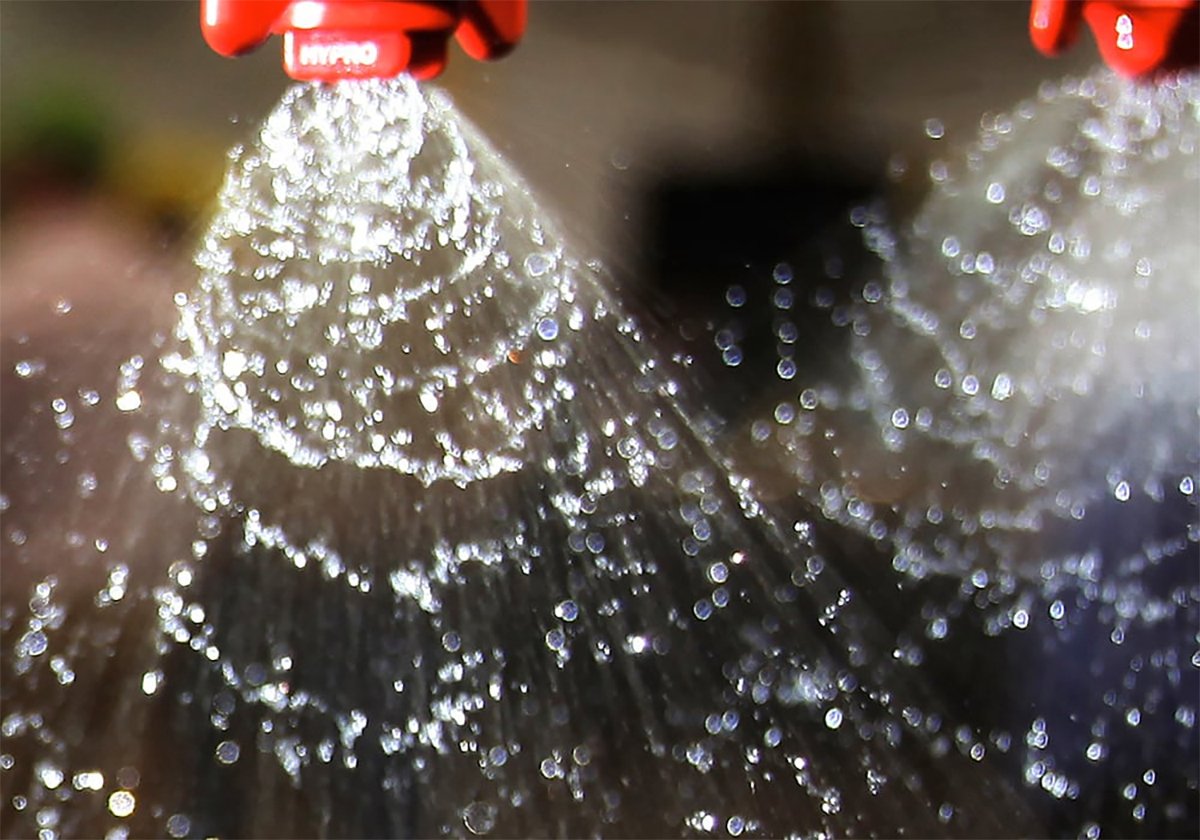Farm equipment is often in the wrong place at the wrong time when flood waters flow.
Whether frozen to the ground, surrounded by melt water, snow or mud, the equipment often is not accessible.
Getting that water out after the fact can be tedious but it’s necessary if producers are going to avoid big bills or costly down time later in the season.
“The first thing I would do is contact my insurance agent,” said Tony Kaminski, a consulting engineer with the Saskatchewan Research Council, in Saskatoon.
Read Also

U.S. soy and cotton growers might use dicamba in 2026
American farmers could be spraying dicamba on their soybean fields next year, if a proposed registration becomes reality.
“If the equipment is insured and has been heavily flooded, it may not be worth taking the risk of repair. Farm equipment is made of steel and it doesn’t react well with water.”
Mechanical engineers say farmers should take several measures before they start up a flooded tractor without dealer reconditioning.
- Clean all exterior surfaces of the machine that is to be serviced. Fine silt that was in the flood water could get into the machine.
- Remove all filters from the machine and drain the crank case, transmission and differentials. Flush these with oil or transmission fluid of the type normally used. Final drives and manual gearboxes may be flushed with solvent. Refill with the correct product after other cleaning is complete.
- Remove the fuel injectors and disconnect fuel lines, purging them with compressed air. Drain fuel tanks and rinse with fresh fuel and drain again to eliminate water and mud. Remove or carefully clean intake manifold and turbo charger components.
- Turn the engine over slowly, by hand, while the injectors are out, so water is forced from the cylinders. Squirt oil into the cylinder bores. Turning the engine over slowly will lubricate the rings, pistons and cylinders.
- Remove starter and generator or alternator and either have them serviced professionally or carefully disassemble and dry thoroughly, replacing ball bearings in alternators and lubricating any moving parts with light machine oil.
- Sealed bearings need not be replaced if they are in good condition. Serviceable bearings should be taken apart, rinsed with solvent, lubricated and reinstalled.
- Radiator fins should be cleaned with high pressure water to remove silt. The cooling system should be drained and flushed with a garden hose. Be sure to open the heating system valve and remove the thermostat. New coolant should be used to fill the system.
- Batteries that were submerged might need to be replaced if no charge is present or the cells have been filled with flood water. If batteries are still functioning after being submerged, plan on early replacement.
- Once the machine is serviced, start and run it at slow speeds until operating temperature is achieved. If flood mud was found in and around the engine and gear boxes, the oil, hydraulic and transmission fluids should be replaced again before any grit still in the system has a chance to settle on wearing surfaces.
- All greasing points should be over lubricated allowing the grease to flush out any water or silt.
Drain enclosed spaces
Small gas engines should get similar treatment. Flooded trucks and cars should have panels removed from the interior, draining and drying doors, seats, battery wells and any enclosed spaces. Factory drain holes in body panels should be checked to ensure they are not blocked.
Electric motors require special attention to ensure they are cleaned of grit and fully dry, as short circuits can be dangerous to the operator and the motor. Ball bearings in motors should be replaced and shafts that run in bushings dried and cleaned.
Implements should also be cleaned and over lubricated. Rust preventative coatings applied to moving parts could help prevent corrosion. All v-belts and drive belts should be cleaned and examined for cracks. The pulleys that drive them should also be cleaned to remove grit.
“Agricultural seals are not designed to keep out water in a flood. Their surfaces should all be checked if repairs are being made. If rust is present then resurfacing will be necessary. The tolerance for the seal surface is 15 to 20 microns and a little corrosion will render the seal useless,” said Kaminski.
Seed, dry product or fertilizer boxes, air seeder boxes and seeding equipment should be dried, cleaned and lubricated as soon as possible.
Repack bearings and inspect seed tubes for blockages.
Any caked material should be removed immediately as it can be highly corrosive. Dry and clean any electrical or optical sensors before powering, because damage to these sensitive items can be done by moisture and electricity combined.
















